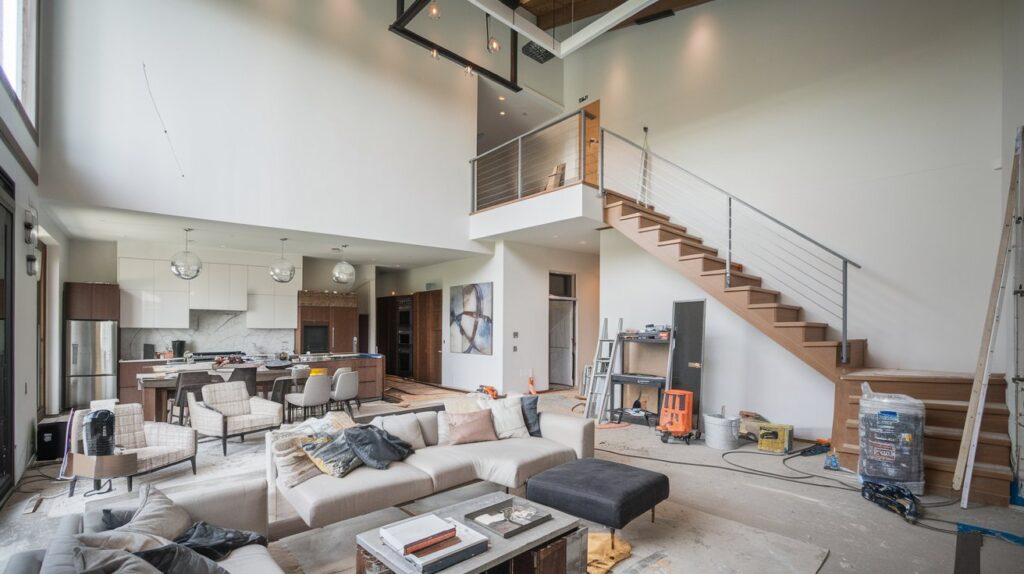Deciding to renovate your home is a big commitment-especially when it’s not just a kitchen refresh or a new bathroom vanity, but a full transformation. The truth is, most homeowners underestimate how many moving parts go into a large-scale renovation. From design decisions to permits, trades, and final touches, the process involves hundreds of steps. That’s exactly why many Toronto homeowners are turning to full-service home renovations in Toronto instead of managing everything piece by piece.
Here’s the thing: when you work with a full-service team, you’re not just hiring a contractor-you’re hiring an end-to-end partner who handles the entire process. Let’s break down how that actually works, from the first meeting to the final reveal.
The Initial Consultation: Turning Ideas Into a Game Plan
Every renovation starts with a vision. But before any walls come down or tiles go up, you’ll meet with a project consultant or designer to talk through your goals. This first step is all about getting clarity.
Maybe you’re dreaming of an open-concept main floor, a finished basement, or a complete top-to-bottom overhaul. A good consultation won’t just ask what you want-it’ll also cover timelines, rough budgets, and how the process will affect your day-to-day life while the work is happening.
This is when you’ll discuss your must-haves versus nice-to-haves, which is crucial for setting realistic expectations from the start. According to the Canadian Home Builders’ Association, having clear project goals at the outset helps avoid costly changes later in the process. (Source)
Design and Planning: More Than Just Picking Paint Colours
Once you’ve agreed to move forward, the next phase is design. This isn’t about flipping through Pinterest for backsplash ideas (though that’s part of the fun). It’s about creating a detailed blueprint for your home’s new layout and look.
Full-service teams typically include interior designers and architects who work alongside the construction crew. They’ll help you:
- Map out new floorplans
- Choose materials and finishes
- Plan lighting and electrical layouts
- Maximise natural light and storage
This stage often includes 3D renderings or virtual walk-throughs so you can see your future space before any construction begins.
Permits and Paperwork: Navigating Toronto’s Building Codes
Here’s where many DIY renovators hit a wall-literally and figuratively. Major home renovations in Toronto usually require permits, especially if you’re changing structural elements, plumbing, or electrical systems.
A full-service renovation team handles all of this for you. They know the ins and outs of Toronto’s zoning bylaws, heritage property considerations, and building code requirements. That means you won’t have to stand in line at City Hall or worry about unexpected red tape slowing down your project.
The City of Toronto’s website has a full list of what requires a permit (Source)
Demolition and Preparation: Clearing the Way for New Beginnings
Once the paperwork is squared away, the real action starts. Demolition is usually the fastest phase of any renovation, but it’s also the messiest. Your project manager will coordinate tradespeople to remove old cabinets, flooring, walls, and fixtures-safely and strategically.
If you’re living in your home during the renovation, expect dust, noise, and temporary disruptions. Good contractors take steps to minimize this with protective coverings, dust control systems, and clear communication about what areas are off-limits each day.
Construction and Installation: Building the Vision
This is the longest phase of a full-service renovation. It’s where plans become reality. You’ll see framers, electricians, plumbers, HVAC specialists, and carpenters all working in sync.
Coordination is key. In a full-service model, there’s usually one project manager overseeing everything. That means no chasing down trades or worrying about schedules clashing. The manager handles all communication between the different teams, so you’re not stuck playing middleman.
Expect regular check-ins and walkthroughs to ensure everything is on track and up to code.
Quality Checks and Inspections: Making Sure It’s Done Right
Once the major work is finished, there’s a detailed inspection phase. This isn’t just about ticking boxes-it’s about making sure the craftsmanship holds up to professional standards and city regulations.
Electrical work will be inspected. Plumbing will be tested. Walls, ceilings, and floors will be checked for level and plumb. These inspections aren’t just for peace of mind-they’re often required to officially close out permits.
Full-service teams handle all follow-ups with the city, so you don’t have to.
The Finishing Touches: Where the Magic Happens
This is where your renovation goes from “construction zone” to “home.” Finishing touches include:
- Installing hardware
- Final paint touch-ups
- Adjusting doors and drawers
- Cleaning up the site
At this point, you’ll do a final walkthrough with your contractor to create a list of any last-minute tweaks. This is often called the “punch list.” Reputable renovation companies won’t consider the job done until everything on that list is crossed off.
Aftercare and Warranties: What Happens Post-Reno?
A good full-service renovation doesn’t end when the crew packs up their tools. Many companies offer post-renovation support, including warranties on labour and materials. Some will even schedule follow-up visits a few months later to check in.
This matters because homes settle, especially after major structural changes. Doors may shift slightly, paint might need a quick touch-up, or a cabinet hinge might loosen. Having a team you can call post-renovation gives you peace of mind that you’re covered if small issues pop up later.
Bringing Your Vision to Life
At the end of the day, full-home renovations aren’t just about drywall and flooring-they’re about trust, coordination, and having the right team in place. Working with a full-service contractor means you’re not managing dozens of moving parts yourself. Instead, you’re partnering with experts who guide you from the first sketch to the final coat of paint.
For Toronto homeowners, this approach saves time, reduces stress, and results in a finished product that feels cohesive from top to bottom.
If you’re ready to turn your renovation ideas into reality, make sure you choose a team that can handle the entire journey-concept to completion.

